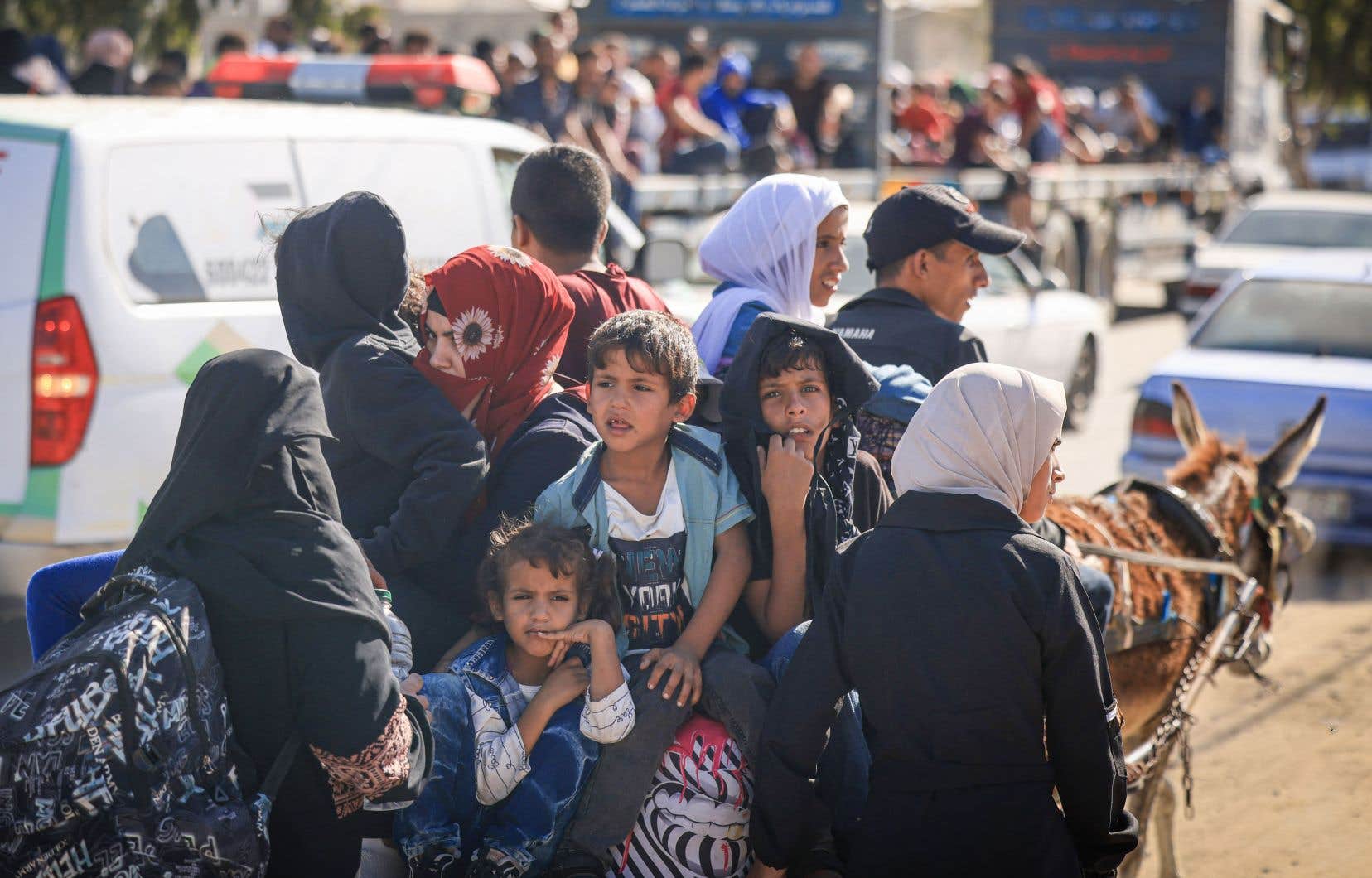Before the worst, the appeal: on Friday, Israel asked more than a million Palestinians to evacuate the north of the Gaza Strip, where the intervention of its army, almost seven days after the attack surprise launched by Hamas against the Hebrew State, would only be a matter of time.
Leaflets launched by drone over Gaza City and urging local residents to “immediately leave their homes” revealed columns of refugees fleeing urgently, on foot, by truck, by car or by cart, towards the south of the tiny territory barely 41 km long. It’s 9 km less than the island of Montreal.
However, by threatening the Palestinian enclave with a forceful entry of its army, Israel is bringing back another specter: the very dark one of the massacres of Palestinians in the Sabra district and the Chatila camp during the Lebanese civil war. This is because of the hatred and revenge that largely motivate Israel’s military action.
“It’s unfortunately the same kind of scenario that could happen here,” explains Nina Tannenwald, a Near and Middle East specialist and political scientist at Brown University, contacted by The duty in Providence, United States. “The number of civilians killed in a ground attack in Gaza is likely to reach several thousand, as was the case in Sabra and Shatila. »
It was September 1982, in southern Lebanon, then under Israeli occupation. Between 700 and 5,000 Palestinian civilians – the figure varies depending on the source – lost their lives in this neighborhood and this refugee camp due to a military operation launched in reprisal against this population by the Christian militias of the Phalangists. The assassination of Lebanese President Bachir Gemayel by pro-Palestinian Syrian activists triggered the act of revenge. These massacres took place with the complicity and active participation of Israel, through the communication, among other things, of information on these sectors, as established the following year by an international commission of inquiry.
Justify the war
It is perhaps to ward off this dark memory of the past that Tel Aviv has been seeking for several days to place its military response within the framework of a “just war”, to use the concept theorized in 1977 by the American philosopher Michael Walzer. , rather than in that of revenge for the 1,300 Israeli victims of Hamas terrorist attacks.
The unveiling on Thursday of appalling images of the bodies of children and infants mutilated by terrorists participated, in part, in the research and exposure of these “legitimate conditions for the use of violence”, necessary in a just war, according to Walzer, before the continuation of the conflict on the ground.
On Friday, the Israeli state unveiled a painting showing the flags of 40 other nations affected by the massacre perpetrated by Hamas, to symbolically make the continuation of its ongoing military operation an international issue rather than a regional one. These countries include several nationals among the dead victims of Hamas’s trail of violence or among the 150 people kidnapped by the terrorist group.
By calling on the Palestinians in the north of the Gaza Strip to evacuate the area, Tel Aviv is also seeking to prepare terrain that is familiar to Israeli forces, and above all risky in terms of the negative images that it could bring to bear on Israel.
This is because Hamas has become accustomed in this Palestinian enclave to blending in with civilians to complicate military interventions targeting it. On Friday, he also invited the Palestinians not to follow the evacuation order launched by Israel, denouncing a “psychological war” aimed at destroying Palestinian solidarity.
The deaths in the gang are still used by the group to fuel its propaganda networks and its hatred against the Israeli state, which it has vowed to destroy. At least 1,799 people have died in Israeli strikes on the Gaza Strip in the past week, according to the Palestinian Health Ministry. This number includes 583 children and 351 women.
Devastating effects
On Friday, UN spokesperson Stéphane Dujarric warned that the call for the evacuation of civilians from northern Gaza would have “devastating humanitarian consequences”, while Palestinian Authority President Mahmoud Abbas likened such a “displacement” to a “second Nakba”. The word means “catastrophe” in Arabic and refers to the trauma caused by the flight of some 760,000 Palestinians in 1948 to enable the creation of Israel.
“It is impossible to predict what the political consequences of a military operation on the ground will be,” says Nina Tannenwald, “but it is easier to envisage devastating effects rather than the opposite. »
On Friday, Israel acknowledged that its operation on the ground had begun with initial incursions into the Gaza Strip carried out to search for “terrorists” and “weapons” as well as “find missing people”. In the evening, its Prime Minister, Benjamin Netanyahu, also warned that the ongoing airstrikes were “only the beginning” of the Israeli army’s response.
According to Nina Tannenwald, the level of brutality of the upcoming ground invasion and the achievement of the Israeli objective of destroying Hamas may determine what happens next, as will the possible entry into the conflict of Hezbollah or other actors, which could transform it “into a broader regional war”.
And then there is another unknown: “What will happen to the current government coalition [dirigée par le populiste Benjamin Nétanyahou]? asks the political scientist. How long will he stay in power after his government’s terrible security failure? »
A failure which placed the country facing an unprecedented terrorist attack since its creation, and now facing a delicate response at the heart of a geopolitics with precarious balances.
